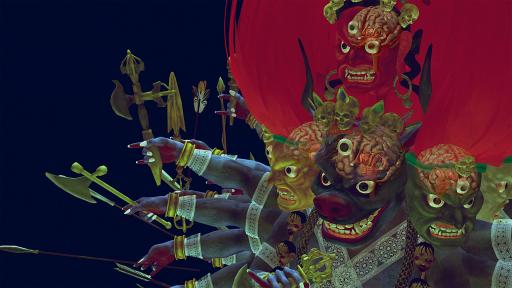Wrathful King Kong Core, Lu Yang
Artwork Overview
Lu Yang, artist
born 1984
Wrathful King Kong Core,
2011
Where object was made: Shanghai, China
Material/technique: single-channel video; 14 minutes 48 seconds
Credit line: Courtesty of the artist and Beijing Commune Gallery, Beijing, China
Accession number: EL2016.004
Not on display
If you wish to reproduce this image, please submit an image request



